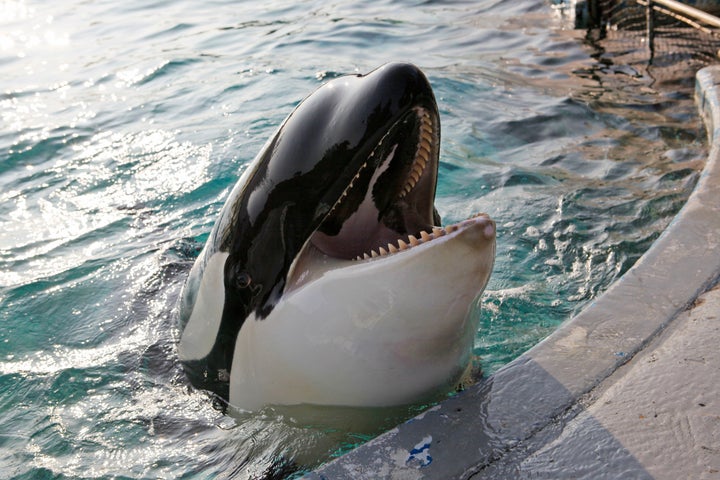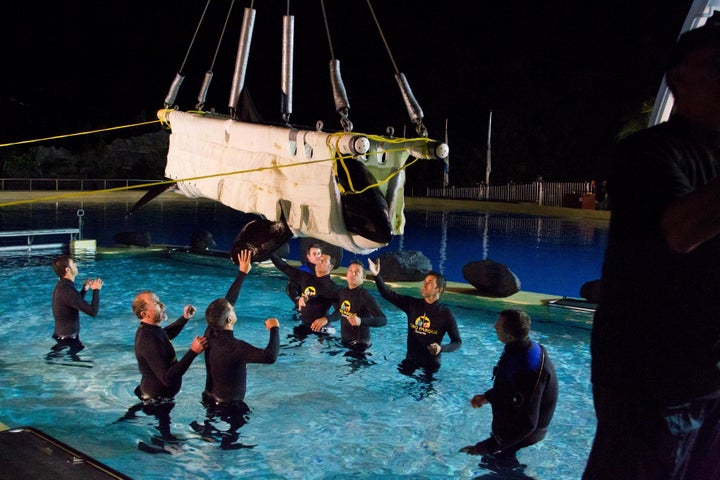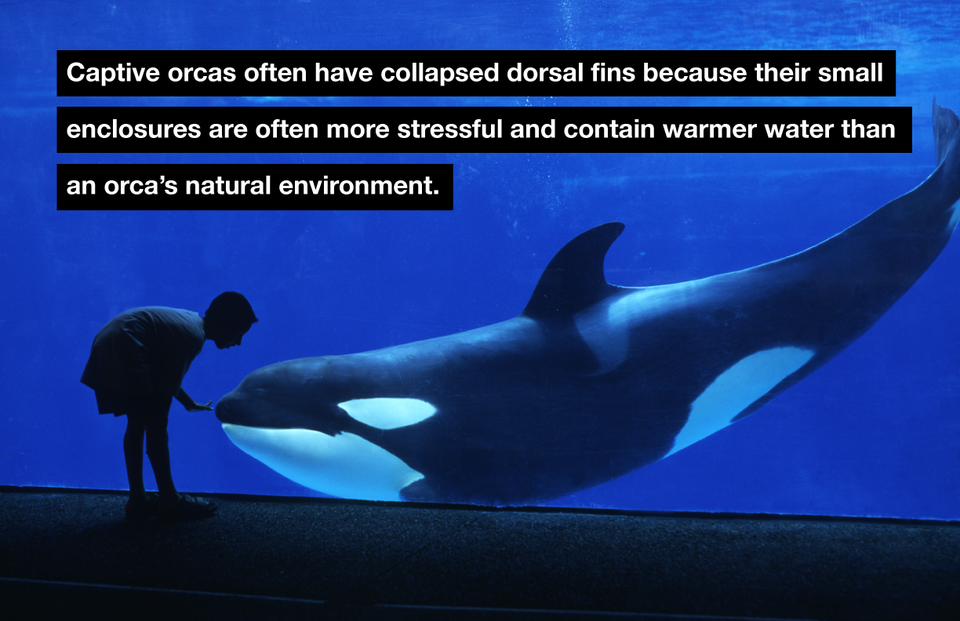A captive killer whale appeared to "beach" herself following a performance at a Spanish marine park, sparking a renewed outcry to end the use of marine animals as entertainment.
The orca named Morgan was filmed lying on the concrete stage for several minutes as crowds trickled out of Loro Parque’s stadium in the Canary Islands. At one point, another killer whale swam past Morgan, but she remained out of the pool, barely moving.
The advocacy group Dolphin Project, which uploaded the new video to Vimeo last week, reported that Morgan lay on the stage for at least 10 minutes. The video cuts off after less than three minutes, so it does not show whether she voluntarily slipped back into the water.
As of midday Tuesday, the video had been viewed more than 470,000 times.

“This is one of many examples of what is wrong with captivity. One would never see this bizarre behavior in nature,” Dolphin Project founder Ric O’Barry said in a statement. O’Barry starred in the Academy Award-winning documentary “The Cove,” which criticized Japan's dolphin hunting.
The Dolphin Project urged people not to purchase tickets to marine park shows that use aquatic mammals.
On Saturday, Loro Parque downplayed any public concern, calling Morgan’s behavior natural in a statement posted to its website. Killer whales are known to voluntarily beach themselves when hunting sea lions, the marine park said. Its six orcas, which are actually owned by SeaWorld, are also trained to perform that maneuver for entertainment and for physical evaluations, it said.
In April, the park addressed another video released by the Dolphin Project that appeared to show Morgan thrashing around in a small pool used for medical purposes. The park blamed sexual frustration for the whale's slamming into the pool door.
Morgan was already the poster killer whale for concerns about the fate of captive marine mammals and the theme park industry.
This spring, the short film "I Am Morgan — Stolen Freedom" was featured at the 2016 San Francisco International Ocean Film Festival. It focuses on her plight -- how she was born in the wild but as a juvenile ended up at the Spanish park in 2011.
Morgan was found disoriented and dehydrated in shallow water off the coast of the Netherlands in June 2010. She was moved to the Dolfinarium in Harderwijk for rehabilitation.
Originally, the plan was to release her back to the ocean. After it was determined that she was too big to stay in her basin at the Dolfinarium, however, Morgan was moved to Loro Parque on the island of Tenerife in the Canary Islands.
When activists sought to intervene and ensure that Morgan would eventually be returned to the sea, an Amsterdam court ruled in 2012 that she had "no reasonable chance to survive in nature.” The Dutch Council of State affirmed that verdict in 2014, holding that the whale’s transfer was legal.
Animal activists were outraged, arguing that Morgan was essentially being sentenced to "life at [a] decrepit marine park," as The Dodo's headline put it.

The court, in contrast, saw the move to Loro Parque as a solution.
“Returning the killer whale to the ocean, as proposed by the animal welfare groups in the Morgan Release Plan, was not deemed to be an 'alternative, satisfactory solution' because Morgan's native pod had not been found and she belonged to a population with a highly complex social structure,” the court said. “In addition, Morgan was a juvenile and it was uncertain whether she would be able to meet her own dietary needs.”
Last month, a study in the European peer-reviewed journal Aquatic Mammals suggested another reason why Morgan might not be able to survive in the wild. It found that the killer whale has a hearing deficit. Her hearing sensitivity "is at least 20 to 30 [decibels] worse" than that of the other killer whales tested.

